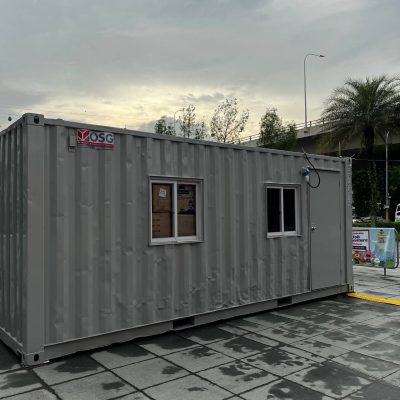The Ultimate Guide to Shipping Container Insulation Materials

Shipping containers are an increasingly popular choice for various applications, from tiny homes and offices to pop-up shops and storage units. However, one challenge that often arises with using shipping containers is managing temperature and ensuring comfort. Proper insulation is crucial to address these issues effectively. In this ultimate guide, we’ll explore the different insulation materials available for shipping containers, their benefits, and how to choose the right one for your needs.
Why Insulate Shipping Containers?
Shipping containers are designed to withstand harsh conditions during transport, but they are not inherently suited for maintaining comfortable temperatures. Without proper insulation, they can become excessively hot in summer and uncomfortably cold in winter. Insulation helps to regulate temperature, improve energy efficiency, and enhance comfort. It also helps to prevent condensation, which can lead to mold and rust issues.
Types of Insulation Materials
- Foam Board Insulation
Overview: Foam board insulation is a popular choice for shipping containers. It is available in various types, including expanded polystyrene (EPS), extruded polystyrene (XPS), and polyisocyanurate (PIR). Foam boards are rigid panels that provide a high R-value (thermal resistance) per inch of thickness.
Benefits:- High insulating value
- Moisture-resistant
- Easy to install
- Lightweight
- Considerations: Foam board insulation needs to be covered with a vapor barrier to prevent moisture from getting trapped between the boards and the container walls. It also requires careful cutting and fitting to avoid gaps.
- Spray Foam Insulation
Overview: Spray foam insulation involves applying a liquid foam that expands upon application to fill gaps and crevices. It adheres directly to surfaces and creates a seamless, airtight barrier.
Benefits:- High R-value
- Expands to fill gaps and cracks
- Reduces air leakage
- Provides additional structural strength
- Considerations: Spray foam insulation requires professional application and can be more expensive than other options. It also needs adequate ventilation during application due to potential chemical fumes.
- Fiberglass Insulation
Overview: Fiberglass insulation consists of fine glass fibers and is commonly used in traditional building construction. It is available in batts, rolls, and loose-fill forms.
Benefits:- Cost-effective
- Good thermal performance
- Fire-resistant
- Considerations: Fiberglass insulation can be challenging to install in a shipping container due to its flexibility and the need for a vapor barrier. It can also be less effective if not properly sealed and can irritate the skin during installation.
- Reflective or Radiant Barrier Insulation
Overview: Reflective insulation, also known as radiant barrier insulation, consists of a reflective material (usually aluminum foil) that is designed to reflect radiant heat away from the container.
Benefits:- Effective in hot climates
- Easy to install
- Lightweight
- Considerations: Reflective insulation is less effective in colder climates and does not provide substantial thermal resistance on its own. It is often used in conjunction with other insulation materials.
- Mineral Wool (Rock Wool) Insulation
Overview: Mineral wool insulation is made from natural rock or slag and is known for its fire-resistant properties. It is available in batts and loose-fill forms.
Benefits:- High fire resistance
- Good soundproofing qualities
- Moisture-resistant
- Considerations: Mineral wool insulation is denser and heavier than other options, which can affect installation. It may also require a vapor barrier to prevent moisture issues.
Choosing the Right Insulation Material
When selecting insulation materials for your shipping container, consider the following factors:
- Climate: The local climate will influence the type of insulation you need. For hot climates, reflective insulation or foam board may be more suitable. In colder climates, spray foam or fiberglass insulation might be better.
- Budget: Insulation materials vary in cost. Foam board and spray foam tend to be more expensive, while fiberglass and mineral wool are generally more affordable.
- Installation: Some insulation materials are easier to install than others. Consider whether you plan to do the installation yourself or hire a professional.
- Space: If space is limited, opt for insulation with a higher R-value per inch, such as spray foam or foam board.
- Additional Benefits: Some materials offer additional benefits such as soundproofing (e.g., mineral wool) or ease of installation (e.g., reflective barriers).
Conclusion
Insulating a shipping container is a crucial step in creating a comfortable and energy-efficient space. By understanding the different insulation materials available and considering your specific needs, you can choose the best option for your container. Whether you opt for foam board, spray foam, fiberglass, reflective barriers, or mineral wool, proper insulation will help ensure that your shipping container serves its intended purpose effectively.
Investing in the right insulation will not only improve comfort but also enhance the longevity and functionality of your shipping container. With the right choice, you can transform your container into a cozy, efficient, and durable space that meets all your needs.

